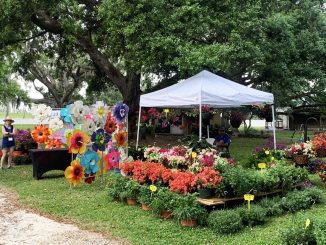
As 55 percent of the country has been swept by one of the most severe droughts in the past 50 years, the Mississippi River has been running at a record low.
Chuck Villarrubia, senior coastal scientist with the Coastal Protection Restoration Authority, said the river levels in the New Orleans area are at a record low for the month of July going back to when river level records started being kept in 1935.
“The stage right now at New Orleans with the data I have is at 2.4 feet (above sea level) and the average stage for the month of July is 9.8 feet,” Villarrubia said. “The minimum stage I have in the database that goes back to 1935 is 6.3, so yes it is low.”
Reports coming out of upriver areas near Vicksburg, Miss. have said boats and barges transporting goods along the waterway have scraped bottom across sandbars developed by the sediment displaced by the low waters.
Usually the water levels at this time of year cause a discussion as to whether the Bonnet Carre Spillway should be opened to relieve pressure. This year, however, the local effect of the drought means the Davis Pond Freshwater Diversion in Luling is not diverting freshwater from the river into the surrounding marshland, Lake Cataouatche and the Barataria Basin as a whole, which results in higher saltwater counts.
While Villarrubia said it is not uncommon for the marshland and Lake Cataouatche to have high saltwater counts, it usually does not start this early.
“It does happen in the fall. In the fall you’ll have high salinity rates particularly if you’re not getting any rain and we haven’t had a chance to put much water into the lake,” Villarrubia said. “It’s just happened a little earlier because of the low river stage.”
The diversion pond was built in 1997 to help restore ecological conditions to the wetlands by imitating historic spring floods that provide fresh water and nutrients from the Mississippi to the Barataria Bay estuary. The pond is also aimed at stemming land loss in the area and improving the wildlife habitat and local fisheries.
Right now, the salinity levels are above average for the region. Villarrubia said at the midpoint of the Barataria Basin the count is high.
“The target area is six to ten parts per thousand and when I just looked at the numbers a minute ago it’s between ten and 12 parts per thousand, so it’s a tad high,” Villarrubia said.
Villarrubia said the higher saltwater count may result in some ecological effects.
“High salinity like that is a stressor to the plants. It could reflect next year’s growth,” he said. “It can affect some growth of the plants. We’d rather push this back if we could, but if we don’t get the rain there’s not much we can do.”
If the plants are affected in the region then so might the local wildlife and seafood harvests. If plants die altogether their roots will no longer hold the soil together and coastal erosion will progress.
“They start going and that creates more erosion and increases the tidal prism and that is what has really happened to begin with,” Villarrubia said. “Without the river it’s all organic. When it’s all organic, the plants can only keep up through relative sea-level because they are growing faster because (the plants don’t) have the settlement and the salinity stresses things and they can’t grow as fast.”
Recent rains will undoubtedly help, but Villarrubia said it is going to take a whole lot more to bring the river back to normal for this time of year.
“We’ll just have to see how it goes and if the river comes back,” he said.




Be the first to comment